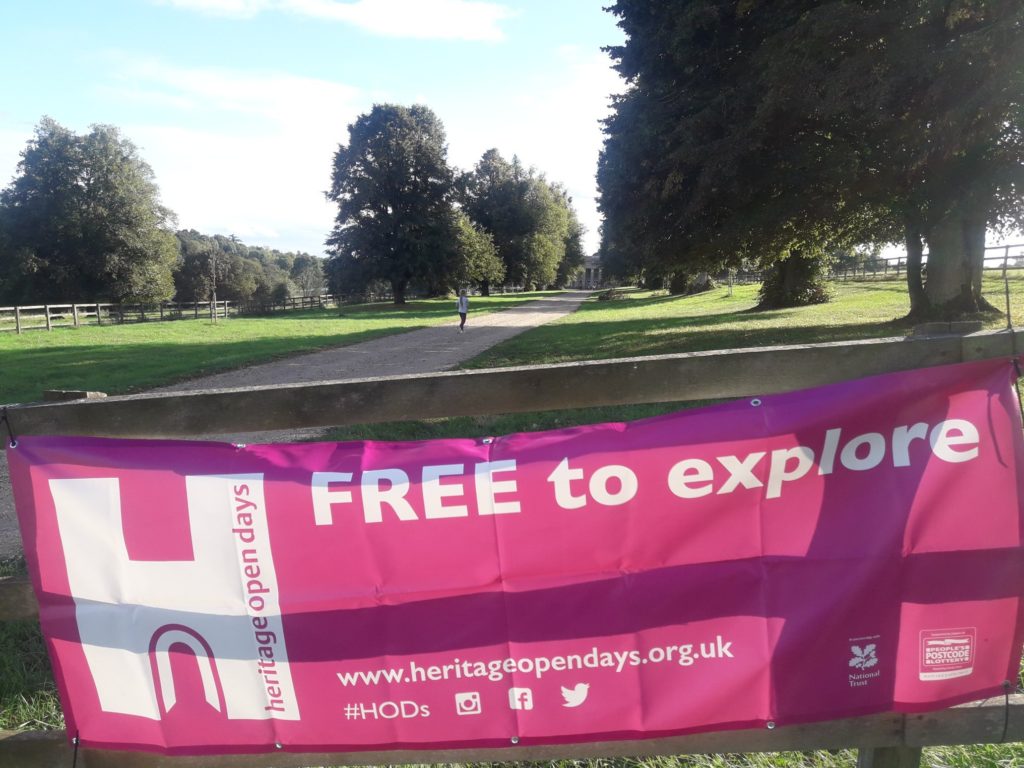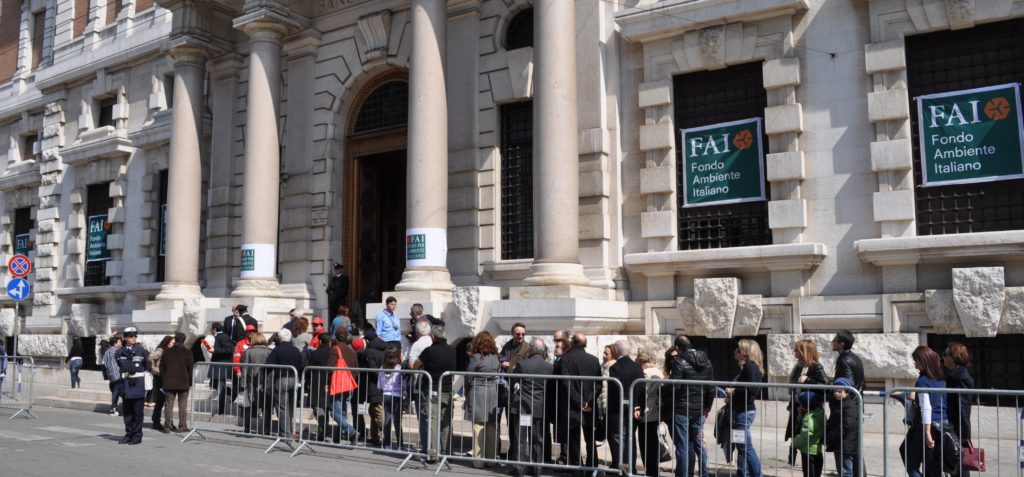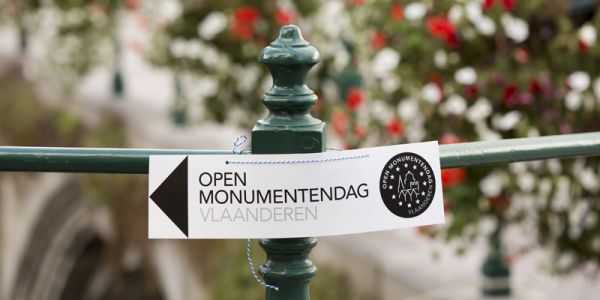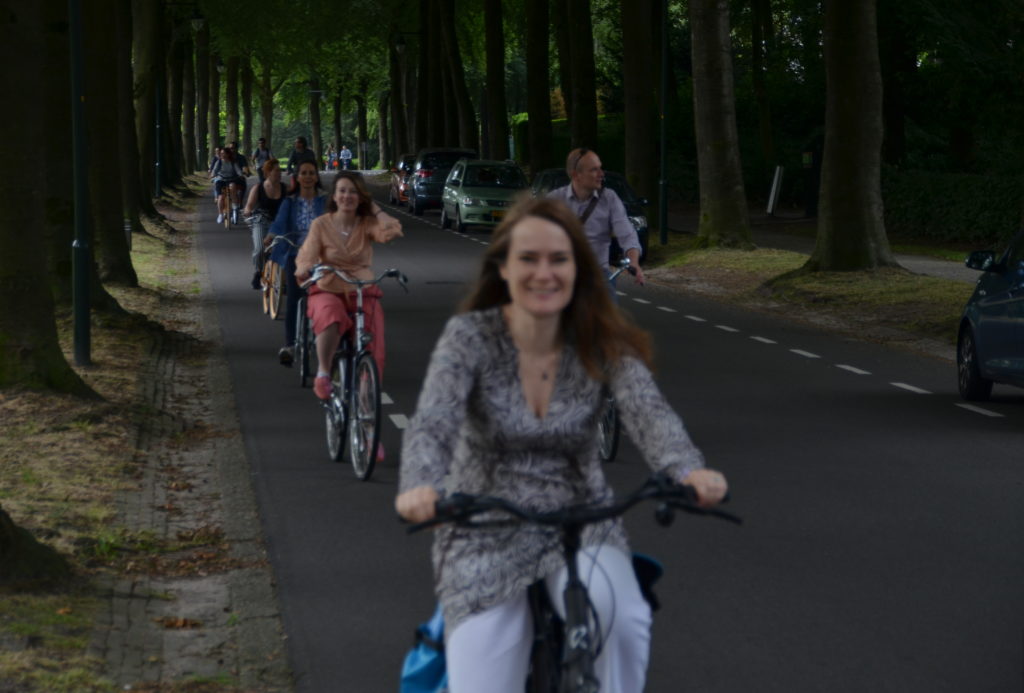-
Open arms, doors and gates (Weekly blog, 15 September 2019)
Posted on September 15, 2019A blog by Catherine Leonard, Secretary-General
Open Days
Last week saw the beginning of this year’s Heritage Open Days in the UK. The festival, celebrating its first 25 years in 2019, is co-ordinated by the National Trust. And there are other INTO members that also run open days in their territory. Like Herita in Flanders which manages Open Monumenten. And Manx National Heritage. Also FAI in Italy with their Giornate FAI di Primavera (or FAI Spring Days). Or the National Trust of Slovakia’s Open Gardens Weekend. As well as Trusts in Australia (Brisbane Open House) and the Barbados National Trust Open House Programme.

Why open your doors?
Open days are a good way of building awareness. The idea of the ‘Journée Portes Ouvertes’ began in France in the 1980s. Heritage protection, previously focused on large, prestigious and ‘honey pot’ sites such as cathedrals, castles and palaces, was beginning to open up. More ordinary buildings like shops, cinemas, cemeteries and 20th-century buildings became of interest. At the same time a policy of decentralisation and citizen involvement in decision-making brought people into closer contact with their heritage.
The formula of the heritage day is to open, once a year on a special day or weekend, a number of historic buildings free of charge. And to provide information about their history, guided tours, concerts, craft demonstrations or activities for children. The idea is to open all sorts of buildings, not just protected monuments but anywhere that can tell a story. And preferably somewhere normally closed or only offering partial access. Such as being allowed to go past the information desk at the town hall to visit the mayor’s office, the cellar or attic.

FAI, the Italian National Trust’s successful ‘Spring Days’ programme
European Heritage Days
Heritage Days now take place in the 50 signatory States to the European Cultural Convention. They highlight local skills and traditions, architecture and works of art. But the broader aims are to raise awareness of cultural diversity; stimulate appreciation; encourage greater tolerance; highlight the need to protect cultural heritage against new threats; and to invite Europe to respond to the social, political and economic challenges it faces. Over 20 million visitors come to these heritage days which have now grown to include other countries around the world.
Tips for success
Some good tips for a heritage open day include letting children guide visitors around monuments, perhaps as part of an ‘Adopt a Site’ school project. Using it as a platform for a new publication, exhibition or starting/completing a restoration project. Producing brochures, leaflets or maps that can be shared with tourist agencies afterwards. Even keeping sites open on a more regular basis after ‘testing’ interest through a heritage day. And finally advocacy. Local politicians can be invited to give a speech at the start of a heritage day. And they are often surprised by the depth of interest of their audience!
When Herita celebrated thirty years of Open Monuments, they produced this useful guide for planning open days. 30 ideas to inspire your planning for next year!

Open all hours
Last week, we convened a meeting between American INTO supporters and National Trust colleagues. It was a wide-ranging conversation and one of the topics we touched upon was Parkrun. Andy Beer, NTEWNI Director of the Midlands, spoke about the first parkrun at Killerton in Devon. Now the Trust hosts over thirty parkruns at different properties, making it the biggest provider in Europe.
For those that don’t know, Parkrun organise free, weekly 5km timed runs all around the world. The one at Killerton takes place every Saturday at 9am. (So outside normal opening hours.) Average weekly attendance is about 230.
Andy spoke passionately about the success of the parkrun partnership. By opening its gates to runners, the Trust is engaging with different people in a different way. People enjoying running around beautiful parks and steadily over time, their love of place grows. Furthermore by opening its cafés, the Trust is also welcoming non-runners (and making a bit of money!).
He cited three factors for success: being open to partnership, giving up control and attracting new audiences.
(Programming was one of two official ‘good practices’ the Innocastle partners and stakeholders took home from their visit to Wales this May.)
On yer bike!
Andy added that the Trust is continuing to open up new cycle routes on its land. Some of these are in eighteenth century parkland. Where, interestingly, the landscape is designed to be viewed from a carriage … Not unlike a bicycle! In some cases, the organisation is therefore reinstating lost carriage drives. This not without controversy as tarmacking nature is not always popular. Eventually, the Trust plans to develop the sort of bike routes that connect cities and towns. But at the moment opening up safe spaces for children to learn to ride is proving particularly popular.

Cycling with Innocastle in Gelderland (with thanks to Paul Stein for the photo)
Driving attendance
Andy revealed the best way to increase attendance at an NTEWNI property. Not by offering free tickets or marketing. No. By changing the product. Obviously being in a Hollywood movie helps but otherwise the Trust has found that contemporary art installations work well. (Rather than exhibitions about NT collections, interestingly.) So, think Grayson Perry and Anthony Gormley rather than Sèvres pottery or portraits.
A new report Inspiring Creativity, Heritage & The Creative Industries by INTO partners, The Heritage Alliance demonstrates the importance of heritage organisations, buildings and places in underpinning the creative industries.
What parkrun and Heritage Open Days have in common is about offering something for free. Moreover by getting people in through our open doors and exposing them to our work, they too can fall in love with our places! It may be a long process of gently growing engagement, but it should be worth the wait.

 44 (0)20 7824 7157
44 (0)20 7824 7157